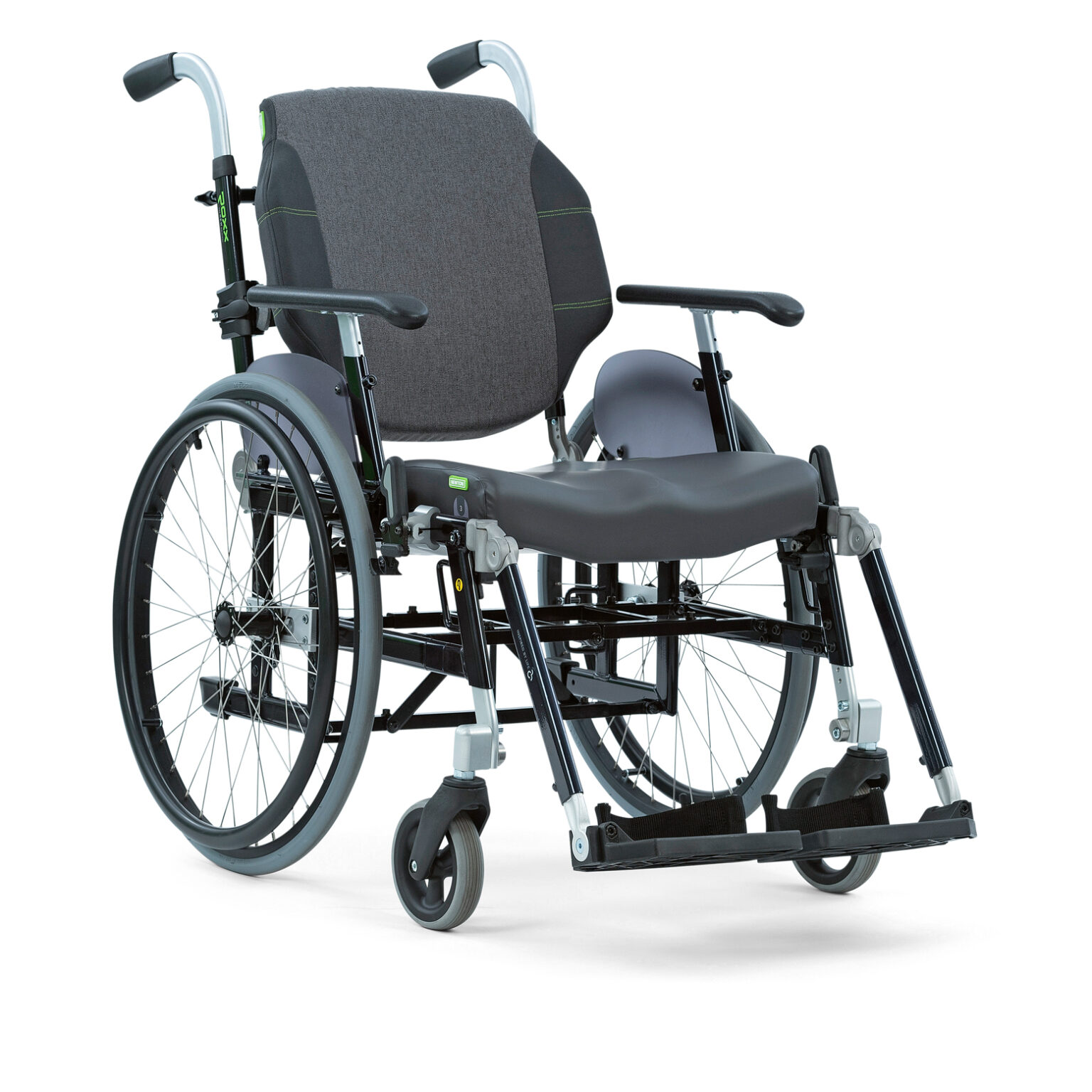Raw material consumption of Roxx
The Roxx is the manual wheelchair with the highest sales volume in Life & Mobility’s portfolio. Therefore, the environmental impact of the Roxx is representative of our other manual wheelchairs. The most common configuration was used to calculate the weight and CO2-equivalent.
Specification of materials used
The total weight of the Roxx is +/- 37 kg.
Weight
Material type
Specification of CO2-equivalent per material
The CO2-equivalent in kilograms was calculated by multiplying the material weights with the predetermined values from the ‘Granta Edupack database.’ The values in this database are based on the entire production process required to obtain 1 kilogram of material in an end product. For example, for plastic: the extraction of oil, the refining process to produce the base plastic, and then the processing to create the plastic end product. The total value for 1 Roxx made from 37 kilograms of raw material is 218 kilograms of CO2-eq.
Material type
CO2-equivalent
During the 15-year period of use, a Roxx is typically used by an average of 22 clients. During this period, the Newton cushion parts and other wear parts such as tires, brakes, and armrests are replaced based on functional depreciation criteria. These criteria have been jointly established with the depot holder and manufacturer. The total CO2-eq over a period of 15 years amounts to 466 kg CO2. The breakdown is shown in the table below.
| Part | Use | CO2 kg | Factor | In 15 years |
|---|---|---|---|---|
| Frame | 15 years | 157,6 | 1 | 157,6 |
| Newton parts | 2 years | 31,53 | 7 | 220,71 |
| Brakes | 5 years | 1,9 | 3 | 5,7 |
| Armrests | 5 years | 3,79 | 3 | 11,37 |
| Tires | 5 years | 23,51 | 3 | 70,53 |
| Total | 218,33 | 465,91 |
Conclusion
Through collaboration in the long-term care market, we contribute to a significant reduction in CO2-eq per user. In this pooling system, Life & Mobility makes a significant contribution by providing high-quality circular products. As a result, the CO2 footprint per user has been reduced from 218 kg CO2 to 21.2 kg CO2 per user. A reduction of 90%!
